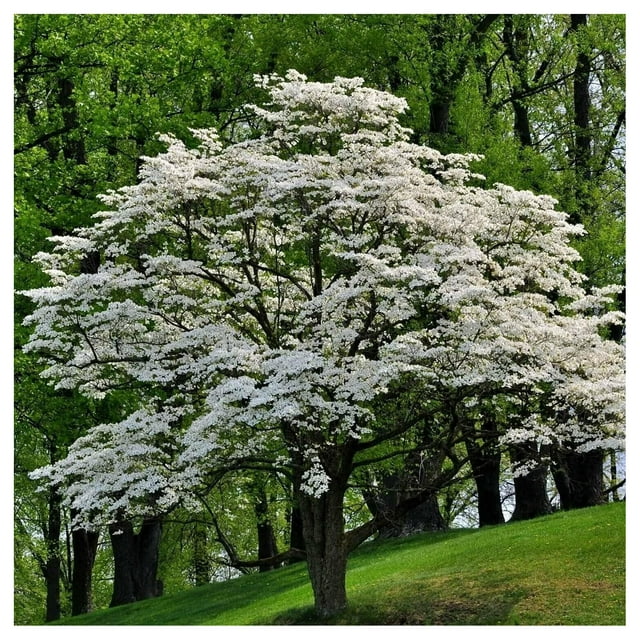Flowering Dogwood

Part shade
Well-drained
Overview:
Cornus florida , commonly known as Flowering Dogwood, is a graceful deciduous tree native to the eastern United States. Admired for its elegant spring blossoms, vibrant fall foliage, and distinctive horizontal branching pattern, this small to medium-sized tree is a popular choice in residential landscapes and naturalized settings.
Botanical Features:
- Scientific Name Interpretation:
- The scientific name, Cornus florida , provides insights into the plant's characteristics and habitat. The genus name, Cornus , is derived from the Latin word for horn, referencing the tree's hard wood. The specific epithet, florida , alludes to the tree's abundance of flowers, not to its geographic origin.
- Size: Flowering Dogwood typically reaches a height of 15 to 30 feet (4.5 to 9 meters) with a spread of 15 to 25 feet (4.5 to 7.5 meters).
- Leaves: Oval-shaped leaves showcase a dark green hue in spring and summer, transforming into rich reds or purples in the fall.
- Flowers: The iconic flowers appear in early spring, surrounded by four large, petal-like bracts that range in color from white to pink or even red. These blooms contribute to the tree's visual appeal and are a valuable nectar source for pollinators.
Cultivation:
- Sunlight: Flowering Dogwood thrives in partial shade, particularly in the afternoon, though it can tolerate full sun with adequate moisture.
- Soil: Well-drained, acidic to slightly alkaline soil is ideal. The tree is sensitive to compaction, making loose soil important for root health.
- Watering: Regular watering, especially during dry periods, is crucial for establishing young trees. Mulching helps retain soil moisture.
- Propagation: Propagation is commonly done through seeds, but cultivars are often propagated through stem cuttings.
Uses:
1. Ornamental Tree: Flowering Dogwood is a prized ornamental tree, often used as a focal point in gardens and landscapes for its spring blooms and fall color.
2. Wildlife Habitat: The tree provides food for birds through its fruit (drupes), attracting species like cardinals and mockingbirds.
3. Understory Planting: Flourishing in the dappled shade of larger trees, it is an excellent choice for the understory layer of woodland gardens.
Maintenance:
- Pruning: Minimal pruning is recommended, primarily to shape the tree or remove dead or diseased branches.
- Pests and Diseases: While susceptible to certain diseases, proper care and site selection can minimize these issues.
- Mulching: Applying a layer of organic mulch helps conserve soil moisture and regulates temperature.
In Conclusion:
Cornus florida, the Flowering Dogwood, stands as a cherished tree, captivating observers with its seasonal beauty and ecological contributions. Whether planted for its exquisite spring display or its role in supporting local wildlife, this tree brings enduring charm to a variety of outdoor settings.